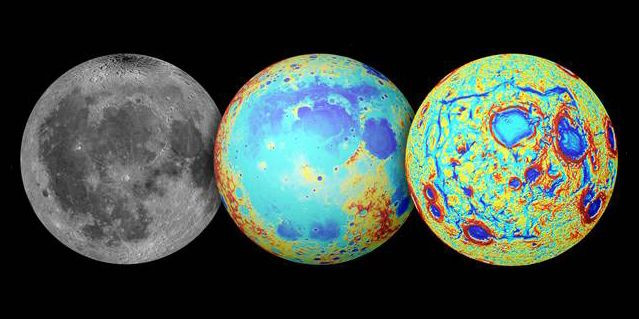Secrets Of Moon’s ‘Ocean of Storms’ Revealed By NASA Mission

Astronomers have used data provided by NASA’s Gravity Recovery and Interior Laboratory, or GRAIL, mission to solve one of the oldest mysteries of the moon’s surface. According to the space agency, a rocky outline of a region on the lunar surface is not related any asteroid impact as earlier believed.
Previous theories suggested that the craggy region on the Moon’s surface known as Oceanus Procellarum, or the Ocean of Storms, was caused by an asteroid. But scientists working on the GRAIL mission said they have found evidence that the rough outline of this rectangular region – about 1,600 miles across – was actually formed by ancient rift valleys.
“The nearside of the moon has been studied for centuries, and yet continues to offer up surprises for scientists with the right tools,” Maria Zuber, principal investigator of NASA's GRAIL mission, from the Massachusetts Institute of Technology, said in a statement. “We interpret the gravity anomalies discovered by GRAIL as part of the lunar magma plumbing system -- the conduits that fed lava to the surface during ancient volcanic eruptions.”
According to NASA, the rifts, buried beneath dark volcanic plains, have been detected only in the gravity data provided by GRAIL. These valleys have not been found anywhere else on the moon, and are believed to have resembled rift zones on Earth, Mars and Venus at some point of time in the past, the astronomers said in a study, published in the journal Nature.
Another theory recently suggested that the region formed as a result of seismic activity deep in the interior of the moon that led to a high concentration of heat-producing radioactive elements in the crust. Further analysis of the gravity data from GRAIL revealed a rectangular shape in resulting gravitational anomalies on the lunar surface.
According to scientists, the rectangular pattern, with its angular corners and straight sides, contradicts the theory that the region is an ancient impact basin, as such an impact would create a circular basin. Instead, processes taking place beneath the moon’s surface were mostly responsible for the evolution of the region.
“Our gravity data are opening up a new chapter of lunar history, during which the moon was a more dynamic place than suggested by the cratered landscape that is visible to the naked eye," said Jeff Andrews-Hanna of the Colorado School of Mines in Golden, Colorado, and the study’s lead author.
© Copyright IBTimes 2024. All rights reserved.






















